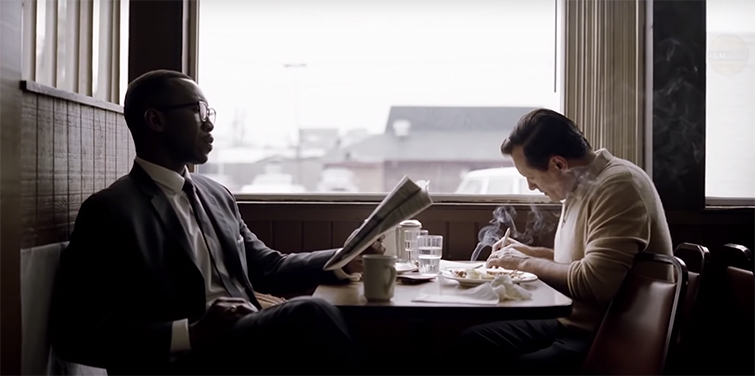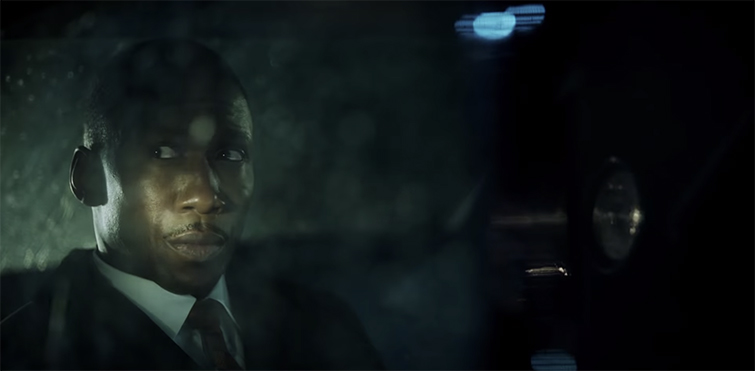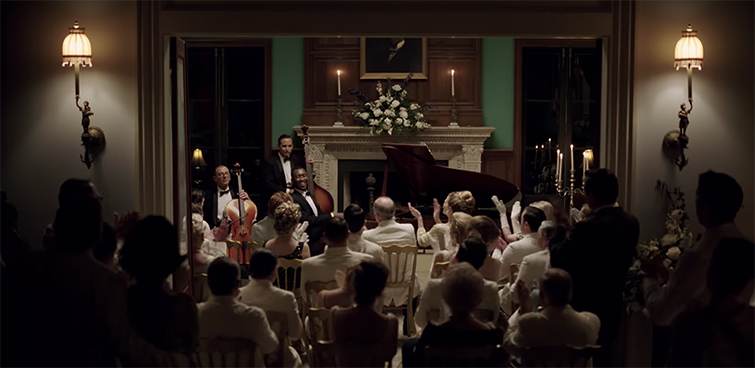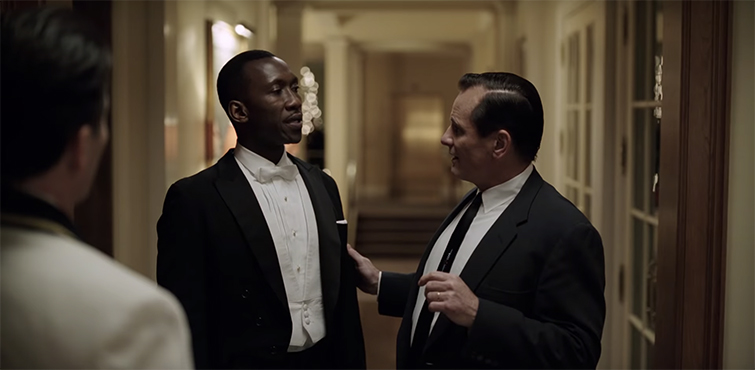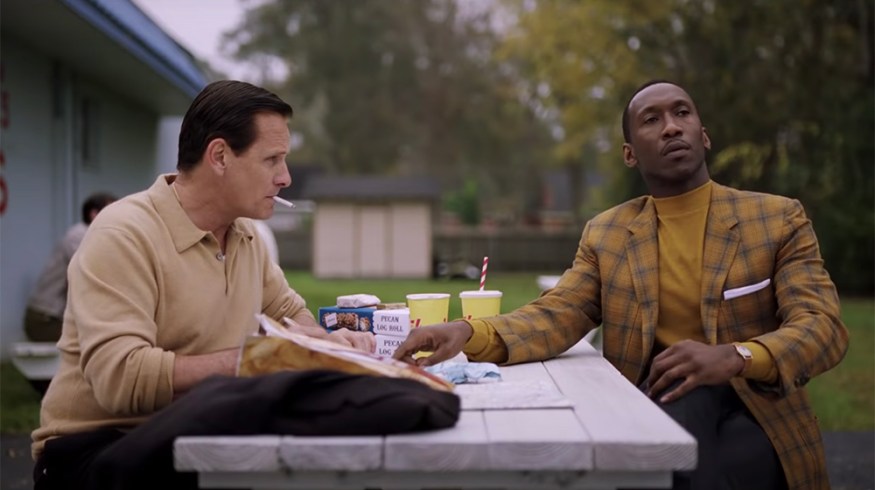
The Editor of Green Book Offers Insight into the Art of Balance
We spoke with the Oscar-nominated editor of Green Book, Patrick J. Don Vito, about knowing when to make the call and kill your darlings.
As filmmaking evolves, it’s our job as filmmakers to rise to the occasion and tell compelling stories in new ways from new perspectives. Green Book is a fantastic example — and it shows how a contemporary film can fit into different genres at the same time. Identifying something as comedy or drama matters less as long as you’re telling a story in a compelling way.
Having scooped up dozens of awards and nominations, Green Book dominated the festival and awards circuit. The movie’s editor, Patrick J. Don Vito, spoke with us about what it took to cut a funny, touching, serious, and relevant story that’s been a hit with critics and audiences alike.
Production Workflow
So shooting started in New Orleans during the Winter of 2018, and Don Vito was editing on the fly, putting scenes and sequences together for the producers and director as they shot. He used the Script Sync tool in Avid to help organize and cut through the scenes as quickly as possible, picking and choosing which lines to present to the director.
Patrick J. Don Vito: The second assistant would use the Script Sync tool in Avid, which is basically your entire line and script, and you can put all your clips on it, and what he does is mark all the clips up so I can go into the physical script and highlight a line of dialogue and click it, and I can hear every version of that line of dialogue. I definitely use it when I’m first cutting, but I especially use it a lot when I’m recutting. Sometimes I’ll be looking at a sequence, and I’ll think “I don’t like that line reading” — let me go back and see what I’ve got, and I’ll just look at every line reading of that line, and I’ll go “I like this one better,” and I’ll replace it into the cut.
PDV: Every day, as stuff would come in, I’d try to catch up to camera so that I’m only a day or two behind, and Pete Farrelly (the director) would come in on the weekend and look over the cut with me and give some notes. He wanted me to be there so that he could jump in when he had time, so I was there in the production office being around all the production managers, so that at any point if Pete came back to the office, he could pop in and look at the edit.
Time to Start Cutting
Patrick offers possibly the greatest takeaway from an editor that I’ve heard yet: understanding how your audience will watch your film will make you a better editor. The simple fact is that it’s very hard to remove yourself from your work. Nobody else will sit in front of the monitors, watching clips and scenes over and over and over again like you. So at some point, the narrative takes on a whole new meaning for you. I think Patrick brings up an absolute must here: you have to get a second opinion. Then get a third, and a fourth . . .
PremiumBeat: The trick with writing and constructing a story that is both dramatic and comedic is a lot more difficult than you’d think. Between pacing, tone, and structure, you also have to make sure you’re fitting in every plot point you need to hit. When cutting comedies, you’re usually given a lot of footage that involves riffing and script diversions. So with something like Green Book that is full of comedic elements, how do you decide what to leave in and what to cut?
PDV: The biggest trick of the movie was to get the balance of the comedy and the drama just right. [Pete] would let the actors ad lib or add lines. The writers were on the set and adding lines as they were shooting, so there were options. First thing I do is put everything in, and then kind of analyze it. Then I start making notes: that I want to get rid of this line, this line, and that line. But I’ll show it with everything because I want the director to see everything they’ve shot and give them a chance to see the scope of it. Then it becomes a balance. There are certain times when you have to figure out how to get back and forth between a tense moment and a comedic moment.
For example, there’s a scene when Doc Shirley kind of browbeats Lip when he’s playing craps outside the concert, and he says “They have to stay outside. You didn’t wipe your knees off. They have dirt on them,” and then you go into this kind of map sequence, where you crane up and see them driving off, and then they arrive at a hotel, and Tony starts writing a funny letter. That sequence in the middle didn’t exist. It cut right to the moment when he’s writing the letter. There was something about that that always bugged me. It seemed too abrupt. We created that moment in between where you get a chance to breathe and sit with your feelings about what just happened before you have the joke. And what ends up happening is the joke actually hits harder. When it’s put up against the other scene, people are still recovering from him being chastised. So it’s about figuring out the balance of the whole thing. Figuring out when to have a joke to relieve the tension, and when to not. Letting people stew a little bit. Let them feel it.
Understanding how one scene should move to the next is tricky. There are all kinds of different cuts you can try out. But the biggest point here is to try all kinds of moves and see what works. Consider the story above everything.
PDV: Transitions are very important. I think they can either make or break a movie. If they’re abrupt or choppy, sometimes you do it for a reason, you want to make people uneasy. In a movie like this, you just want the flow. You want to be on the ride with them, so that’s what I was thinking about the whole time.
PB: Were you showing the film to audiences during post-production?
PDV: It helped that we were getting the movie out to people very early. We were screening the movie to audiences of 50, halfway through the director’s cut. We wanted to see what was working and what wasn’t. You don’t usually have to get any input — you can just feel it. When there are lulls or people are bored, you feel it and go “There’s the portion we need to trim up.” With comedy, it’s tricky because you have to see where the laughs are, there are always laughs you don’t expect. One of the laughs I didn’t expect was after the YMCA scene, when Lip (Viggo Mortenson‘s character) goes “Didn’t I tell you to never go anywhere without me?” and Don (Mahershala Ali‘s character) says “I thought you’d want this to be the exception?” I always thought that was an emotional line, and the delivery is very emotional, but it gets a laugh. In theaters, that gets various degrees of laughter. They were so tense with the scene — they wanted any reason to laugh.
Working with Music
Mahershala Ali’s character “Doc” (based on pianist Don Shirley) is a classically trained pianist who plays packed houses throughout the film. We catch glimpses of these performances, but we never see one of them fully. His musical profession is a crucial makeup of his character, and at times, it influences his dialogue and the decisions he makes on-screen and off. So, I wanted to know if these musical sequences had played out in a different way in the script or in the first cut — as well as how important music was.
PDV: The music scenes were actually much longer, and we cut them down. Pete’s intent was always to trim them down, but they shot entire pieces. The first cut was very long — it was almost three hours. I would let musical sequences play out in their entirety. We would go back and make edits. The overall feel of the music was for Shirley’s music to be a world, the music of the time (the ’60s) to be a world, and then Shirley always wanted to be a classical pianist but couldn’t because he was black, but at the end we get to see him play Chopin. You have that element, too. You also had the score.
PB: So with music playing such an important role, how did you approach the edit, and what music did you have to work with before the score was put in the film?
PDV: So it was about figuring out when to include the score — which scenes needed which type of music. We had two really great music supervisors, Tom Wolfe and Manish Raval, and at the beginning of the movie, they brought me a huge bin of ’60s music. Because we needed ’60s music, we didn’t have a huge budget for music. We needed stuff we could get for a price, and they’d have like 100 songs and say we can get these all for a good price. So from the very beginning, I started using those songs and started picking the ones I liked and putting them in appropriate places. Probably about 80 percent of what I placed is in the final film. I had a lot of control over the music. Pete really liked my choices, so that worked out really well. I would also temp in the score in certain places — the places I put temp score, the final original score was put there for the final cut. That all kind of came together in the editing room. It was really great, having those ’60s songs really makes you feel like you’re there in the moment. Those songs weren’t exactly hits, so it helped immerse you even more into that moment.
Patrick essentially created the feeling of the film. From scene structure to the soundtrack, the world created is one of both familiarity and nostalgia for audiences watching the film. With how important music was for this film, with the music scenes left in, I asked Patrick how long his first cut was.
PDV: The first cut was about 2 hours and 40 minutes long, but I knew it was going to be that long. The script was close to 140 pages. We had all the musical sequences left in the cut, but there aren’t a lot of deleted scenes in this movie. There are deleted portions of scenes. So, we’d watch the movie and ask ourselves “Are we overstaying our welcome in this scene?” Some of the car scenes — the dialogue in the cars was definitely trimmed up. The scene with the fried chicken at dinner — Tony and Don stare at each other — that scene went on for another five minutes. There was a whole sequence Lip tried to cut the chicken with a knife and fork, and it’s not working, so he picks it up with his hands and convinces everyone else to pick it up and eat the chicken with their hands. It was a good, funny joke that was a little too long. The initial joke with the chicken was good enough. We already had that scene, you’re not going to top that scene. We had to cut it. Pete’s son was actually in that scene and was cut out (the true definition of “Kill your Babies”!). There were lots of scenes of dialogue that were cut out — it was all about how the flow was going and how it was feeling. If there was ever a point we felt like it was dragging on, we’d cut it.
Editing takes all kinds of storytelling abilities. Editing narrative dramas is much different than editing documentaries — just like editing action movies is much different than editing comedies. Knowing how jokes should unfold takes a lot of trial and error. You really have to know how audiences read certain texts, and Patrick’s work on Green Room speaks for itself. See it in a theater for yourself: the jokes land, and the audience’s silence during the dramatic scenes is very apparent.
So, Patrick received a nomination for an Oscar, and his work definitely shines through the film. If you’ve seen it, you can speak to the pacing and rhythm of the film. So I asked him what advice he’d give anybody just starting out or hoping to edit a feature one day.
PDV: Keep doing the work. Keep editing. When I started out, I was an assistant, but whenever I was an assistant, I’d ask the editor if there were scenes I could cut. I always wanted to be honing the craft and working on it. You have to just keep doing it and doing it over again, and you start to develop your own sense of timing and process. Everyone’s process is a little different. I always try and talk with editors about their process, and you can learn stuff. Even if its something you wouldn’t do — maybe you can take a piece of that process and use it in yours. I think a lot of times we don’t talk to each other that much; we kind of just do our own thing. And I think we can learn from each other if we keep these conversations open. I think it’s happening more now because editors are being talked to and interviewed more now, so we’re starting to see more information about editing as a craft. It’s important and helpful for other editors to learn from people who have been there and done it before.
Green Book is in theaters now.
Also, I’d like to give a personal shoutout to Patrick for leaving a shot of my mom (who was an extra in the film) in the final cut. Great job!
All images via Green Book (Universal).
For more interviews with Editors and creators, check out our past conversations:


